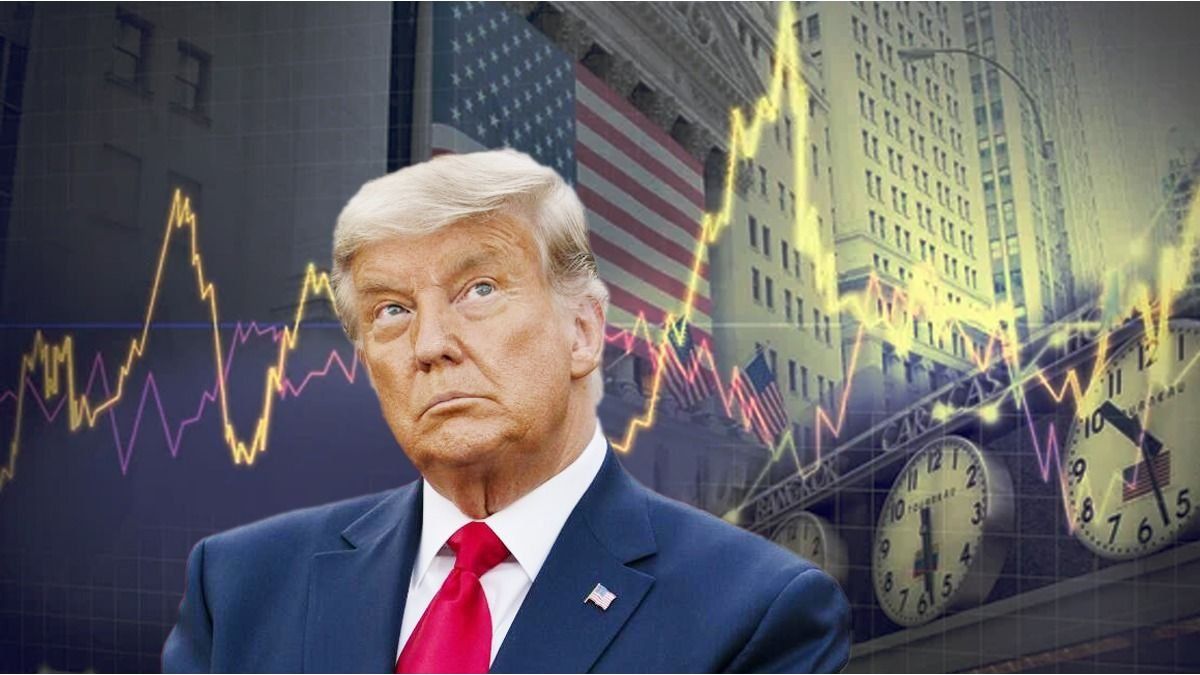The week is close to an end and stock markets continue to deal with persistent uncertaintiesalthough there are still several positive forces at stake. In this sense, an area of special interest is the possibility that actions recover Despite the imminent announcement of tariffs, which reflects patterns observed in previous cycles, including the arrival of Donald Trump to the White House.
The analysis corresponds to Tom Lee de Fsinsight, The ex -strata of Variable Income of JP Morgan, recognized as one of the best valued institutional analysts of Wall Street, who provides a retrospective look at 2018 that suggests that the shares probably rebound after the tariff announcement (day d) driven by the probable fall of the VIX (volatility).
While there are important differences in the economic landscape and market structure, Lee believes that actions could react to tariffs similarly this time as they did in 2018. In fact, Lee sees the contrasts between now and then as an even more advantageous context for stock markets.
“The combination of a accommodating monetary policy and the potential for tariff resolution creates a unique Trump option dynamic and Fed option”Lee said in his role as Chief of Research of Fundstrat Global Advisors. “This double support mechanism could promote a strong rebound in variable income once the tariff situation is clarified.”
Donald Trump tariffs: Waiting for greater clarity
In 2025, as in 2018, investors are in suspense waiting for President Trump to offer more clarity about tariffs. But at that time, Lee says, The S&P 500 collapsed 12% in just 10 days after Trump, in January, In the World Economic Forum in Davos, Switzerland, it will begin to insist on the imposition of tariffs.
This followed Another 9% drop after the announcement of tariffs in March (For September, the S&P 500 had not only recovered completely, but accumulated a 9% rise so far this year), and a 20% collapse after the president of the Fed, Jerome Powell, made a comment in October, Far from being neutral, which indicated that more rates of interest rates were coming.
Once those storms passed, the index shot more than 30% in 2019. It is important to note that the greatest damage to the actions was due to the Fed adjustment policy, not to tariffs, Lee warns.
Donald Trump’s 2025 tariffs: What is different this time?
First, Lee explains, The Fed is currently considering more rates cuts, do not climb. In addition, market technical indicators present improvements, since The S&P 500 has overcome its 50 -day mobile average and the story suggests that rapid falls such as recent are not durable, The analyst said.
Finally, the veteran Alcista del Mercado said that Market prices only indicate short -term damage.
Futures that follow the CBOE volatility index. The fear indicator shows an increase around the deadline of tariffs on April 2, but then a decrease later. “Ultimately, although risks persist, mainly around the terms of the tariff agreement, evidence favors resilience and recovery, since both monetary policy and market technical indicators are inclined to be constructive,” Lee argues who recalls that historically, tariff reductions have not been lasting and have submitted purchase opportunities.
Lee details that The current panorama seems similar to that of 2018, although with key differences that could limit the risk of falling: This year, the S&P 500 began with a rebound of 5% before falling 10% in 20 days after the new tariff rhetoric of February 19.
“The current correction, as in 2018, could lay the foundations for a rebound if the market perceives an eventual tariff resolution as acceptable. Fundamentally, unlike 2018, the current panorama is based on a Fed that already maintains a moderate posture, with the federal fund rate in 4.5%, compared to 1.5% of that time, and with cuts in the horizonthe analyst expands.
Regarding the combination of a accommodating monetary policy and the potential for tariff resolution that creates a unique dynamic between Trump and Fed purchase options, Lee explains that This double support mechanism could boost a strong rebound in variable income once tariffs are clarified. “Volatility expectations seem to confirm this situation. The VIX futures curve currently shows high short -term volatility around the deadline of tariffs on April 2, but a marked decrease in volatility for the following months is expected. This suggests that the markets are prepared for short -term uncertainty, but anticipate a more quieter situation.”
A historical analysis reinforces this volatility thesis: In the face of the presidential elections of 2024, a similarly high VIX curve collapsed after the confirmation of the victory of President Trump in early November, which unleashed the appetite for the risk and promoted a reboundif this pattern is repeated in response to tariff clarity, it could promote another rise in variable income.
Mark Newton, Lee explains, points out that Technical conditions are also improvingwhich supports the hypothesis that the bottom has been touched. The market has recovered the 50 -day mobile average, and Newton is attentive to a closure above 5,703 points in the S&P 500, which would confirm a change of upward trend. In addition, 10% correction in just 20 days is like the fifth fastest fall since 1950. Historically, these rapid falls are usually shocks in the market more than the start of prolonged bearish markets, which often generates strong profits in later periods of 1, 3, 6 and 12 months, says Lee.
“Ultimately, although the risks persist, mainly around the terms of the tariff agreement, the weight of evidence favors resilience and recovery, since both monetary policy and the technical indicators of the market are inclined towards a constructive vision”concludes.
Source: Ambito
I am a 24-year-old writer and journalist who has been working in the news industry for the past two years. I write primarily about market news, so if you’re looking for insights into what’s going on in the stock market or economic indicators, you’ve come to the right place. I also dabble in writing articles on lifestyle trends and pop culture news.




